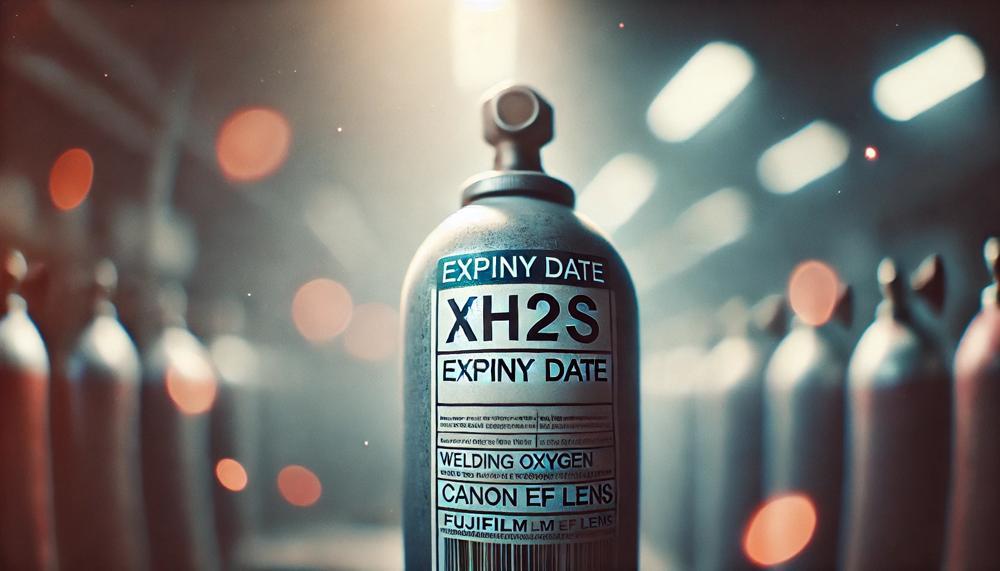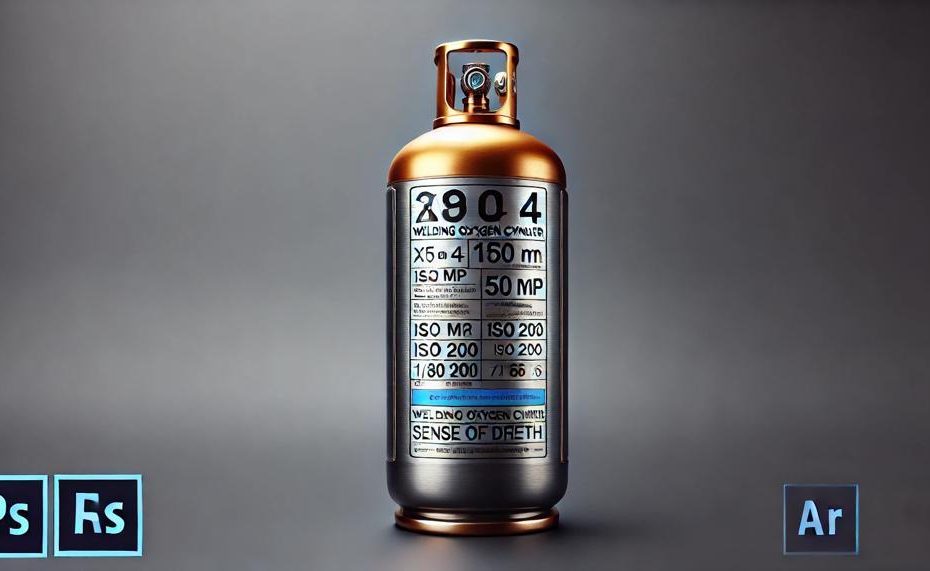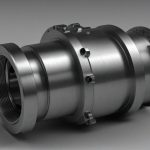Welding operations, a critical component in numerous industries, often rely on a silent yet vital player: the oxygen cylinder. While its presence might seem unassuming, the integrity and safety of these cylinders are paramount.
Imagine a world where every welder, engineer, and safety officer had an encyclopedic knowledge of their tools, particularly the life-span of their welding oxygen cylinders. The importance of this knowledge cannot be overstated, as it is a key factor in preventing accidents and ensuring the effectiveness of welding operations.
In this blog post, we’ll unravel the mystery surrounding the expiration dates of welding oxygen cylinders, a topic often overlooked yet crucial in maintaining safety standards. Here are the key insights we’ll explore:
- Understanding the Significance: Why knowing the expiration date is more than a regulatory requirement; it’s a safety imperative.
- Decoding the Date: Learn how to locate and interpret the expiration date on your welding oxygen cylinder.
- Safety Protocols: Insights into what steps to take if your cylinder is nearing or past its expiration date.
- Best Practices: Tips for maintaining and regularly checking your cylinders to ensure they are within their safe usage period.
This blog post aims to provide you with comprehensive and accessible knowledge, balancing a casual tone with professional insights.
As you delve deeper, you will gain not just understanding, but also the confidence to handle these essential tools of your trade with the utmost care and respect.
Stay with us as we embark on this journey of discovery, ensuring that every welder and safety officer is equipped with this crucial piece of knowledge.
Contents
- 1 What is an Oxygen Cylinder Expiry Date?
- 2 Factors that Affect the Lifespan of a Welding Oxygen Cylinder
- 3 How to Identify the Expiry Date of a Welding Oxygen Cylinder
- 4 Checking for Stamped Markings on the Cylinder
- 5 Inspecting the Physical Condition of the Cylinder
- 6 Adhering to Regulations on Cylinder Expiry Dates
- 7 Conclusion
What is an Oxygen Cylinder Expiry Date?
The oxygen cylinder expiry date marks the end of its guaranteed safe service period. It’s there to ensure the gas inside remains pure and effective for use, and to maintain the cylinder’s structural integrity over time. The safety of using these cylinders, especially in welding, hinges on this date.
Why Checking the Expiry Date is Crucial:
| Factor | Details | Impact |
| Safety | Prevents accidents caused by cylinder failure or contaminated oxygen. | Protects users and maintains a safe working environment. |
| Regulatory Compliance | Adheres to DOT and FDA standards for oxygen storage and use. | Avoids legal issues and ensures industry standards are met. |
| Gas Purity and Effectiveness | Guarantees the oxygen quality for optimal welding results. | Ensures reliable and consistent welding performance. |
Checking the expiry is not just about ticking a box; it’s about ensuring every weld is safe, up to standard, and done with the utmost confidence in the materials you use. Always keep an eye on those dates, and when in doubt, replace or have your cylinder tested.
Factors that Affect the Lifespan of a Welding Oxygen Cylinder
The lifespan of a welding oxygen cylinder is not just about time ticking away; it’s about how we handle and cherish this essential companion in the welding world. Imagine it as a trusty tool in your kit—its durability hinges on the care and respect you give it. Here’s a breakdown of the factors that can nudge it prematurely towards retirement:
| Manufacturing Quality | Poor craftsmanship can introduce flaws into the cylinder’s structure, making it more susceptible to damage over time. A top-notch cylinder is a welder’s best mate, lasting through thick and thin. |
| Storage and Upkeep | Leaving a cylinder in the lurch, exposed to the whims of the weather or near rambunctious heat sources, is a recipe for disaster. It craves a cool, dry spot, away from any drama that could compromise its integrity. |
| Usage Intensity | Like a workhorse, a cylinder put through the paces without respite, especially in high-demand welding escapades, can wear out faster. It’s all about striking a balance, allowing it moments of repose. |
| Physical Inspection Neglect | Turning a blind eye to its expiry date or bruises can lead to unwelcome surprises. Regular heart-to-hearts, in the form of visual checks and hydrostatic testing, ensure it’s fit for the journey ahead. |
Remember, a welding oxygen cylinder’s longevity is much in the welder’s hands. Treat it with care, and it’ll stand by you, ensuring your welding adventures are not only productive but safe. Neglect these aspects, and you’re courting trouble, risking both your craft and safety.
How to Identify the Expiry Date of a Welding Oxygen Cylinder
Identifying the expiry date of a welding oxygen cylinder is essential for ensuring safety and maintaining the integrity of your welding projects. Here’s how to do it accurately:
Visual Inspection
Start with a thorough visual check of the cylinder. Look for any visible signs of wear, damage, or corrosion.
These external cues might not directly inform you of the expiry date, but they’re critical for assessing the cylinder’s condition.
Cylinder Stamp
The most reliable method is to examine the cylinder stamp. Manufacturers emboss or stamp the expiry date on the cylinder’s shoulder or neck.
This stamp typically includes the month and year of manufacture and sometimes the last test date.
| Location | Information Included | Format |
| Shoulder or Neck | Manufacture Date, Test Date | MM-YY |
| Shoulder or Neck | Last Hydrostatic Test Date | MM-YY |
Cylinder Neck Ring
Another method is to check the cylinder neck ring. Some manufacturers attach a neck ring with the expiry date and other relevant information. However, this might not be as common as the stamp on the cylinder itself.
Regular Inspections and Maintenance
Ensure regular inspections and maintenance are carried out:
- Perform physical inspections for any signs of damage or corrosion.
- Adhere to regulations on visual inspections (every 5 years) and hydrostatic testing (every 10 years).
While not a direct method to identify the expiry date, proper storage and handling can significantly impact the cylinder’s lifespan. Store cylinders in a cool, dry place away from direct sunlight and extreme temperatures. This approach helps maintain the cylinder’s integrity and can prevent premature expiry.
Remember, using a cylinder past its expiry can lead to dangerous situations, including leaks or ruptures.
Checking for Stamped Markings on the Cylinder
The stamped markings on a welding oxygen cylinder are crucial for ensuring safety and effective usage. Let’s break down these markings and their implications for the cylinder’s expiry date:
Stamped Markings Explained:
- DOT Marking: This indicates compliance with the Department of Transport regulations in the US. It’s the first set of numbers you’ll find on the cylinder.
- Test Date Stamp: Following the DOT marking, this set of numbers represents the last time the tank underwent testing. It’s pivotal for determining the cylinder’s serviceability.
- Star Stamp: If you spot this symbol beside the test date, it signifies an extended service life of 10 years.
- Plus Sign: This indicates that the tank can safely handle a 10% overfill, a nifty feature for cost-effective refills.
- Ultrasonic Testing Indicator: If present, it shows that the cylinder has undergone ultrasonic testing, a modern method for safety checks, typically every 5 years.

Decoding Expiry Date from Stamps:
To determine the expiry date, focus on the test date stamp. Here’s a handy guide:
| Marking | Meaning | Expiry Calculation |
| Test Date | Date of Last Test | Add 5 years for standard tanks, 10 years if a star stamp is present |
| Star Stamp | Extended Service Life | Add 10 years to the test date |
| Plus Sign | 10% Overfill Capacity | Doesn’t affect expiry but adds value for refills |
| Ultrasonic Test | Advanced Safety Test | Ensure retest every 5 years |
In short, deciphering these markings is akin to reading a map – guiding you to the cylinder’s safe and effective lifespan.
Inspecting the Physical Condition of the Cylinder
Inspecting the physical condition of a welding oxygen cylinder is vital for ensuring safety. Signs of wear and tear can be indicative of an expired or unsafe cylinder. Below is a detailed breakdown:
| Sign | Description | Implication |
| Dents or deformities | Visible indentations or changes in shape | Structural integrity compromise |
| Corrosion | Rust or pitting on cylinder surface | Potential weakness in cylinder walls |
| Valve damage | Cracks or wear on the valve assembly | Increased risk of leaks or failure |
| Leakage | Hissing sound or gas smell | Immediate danger, cylinder is compromised |
| Incorrect labeling | Faded or illegible markings | Uncertainty about contents and safety |
| Expired testing dates | Out-of-date stampings | Non-compliance with safety regulations |
Welders must remember, similar to a mariner who respects the sea’s ever-changing nature, the condition of a welding oxygen cylinder is subject to time and usage. Regular checks, akin to a sailor’s watchful eye, are key.
Adhering to Regulations on Cylinder Expiry Dates
Adhering to regulations surrounding the expiry dates of welding oxygen cylinders is akin to navigating through a maze of safety standards – a task both critical and mandatory to prevent accidents and maintain a secure workplace. Below is a guide, set out in a simple manner, to help you stick to the rules and keep your cylinders in check.
Regular Visual Inspections
The body of a welding oxygen cylinder holds secrets to its usability. Every five years, these cylinders demand a thorough visual inspection. Like scrutinising the sails of a ship for wear and tear, this process involves looking for dents, rust, or any damage that could compromise the cylinder’s integrity.
Hydrostatic Testing
Think of hydrostatic testing as the deep-sea dive to check the hull’s integrity. Occurring every ten years, this test ensures the cylinder can safely hold the gas under pressure. It’s a crucial checkpoint to verify that the cylinder hasn’t weakened over time.
Understanding Expiry Dates
The expiry date, a critical timestamp, is stamped on the cylinder’s shoulder or neck. Picture it as the date on a mariner’s compass, guiding you to when the cylinder should be retired. The format typically used is month and year, making it straightforward to calculate the cylinder’s life span.
Adherence Strategy
To stay aligned with these regulations, welders and safety officers can employ a systematic approach:
| Action | Frequency | Purpose |
| Check Stamped Markings | Regularly | To identify the cylinder’s expiry and test dates. |
| Conduct Physical Inspections | Every Use | To spot immediate risks like dents, leaks, or corrosion. |
| Ensure Proper Storage | Continuously | To maintain the cylinder’s condition, stored in a cool, dry place away from hazards. |
Conclusion
An oxygen tank plays a fundamental and powerful part in the complicated dance of welding, where safety and accuracy are always on the move around the flames. This quiet sentry is very important but not given enough credit. It holds the weight of safety and effectiveness on its metal shoulders. Finding out when these tanks are going to expire isn’t just a matter of following the rules; it’s also a way to make sure that welding projects stay safe and that the people who use the torch are safe.
With this complete guide, we’ve gone over the why and how of keeping track of the expiration dates on welding oxygen tanks, which are a safety net in the potentially dangerous world of welding. Figure out what the stamped lines mean, do regular eye checks, and know how important it is to follow strict testing procedures are all important guidance tools for this trip. The rules and procedures listed here are not just for show; they are what make welding safe and effective.
Let this article be a lantern that leads welders and safety officers through the fog of doubt to the beaches of quality and safety. The job of keeping and checking these oxygen-filled boats is like a captain making sure their ship is seaworthy before taking it out to sea. When it comes to welding, knowing when your oxygen tank expires isn’t just a legal requirement; it’s also a sign of skill, a sign of respect for the job, and most importantly, a promise to keep everyone safe.





